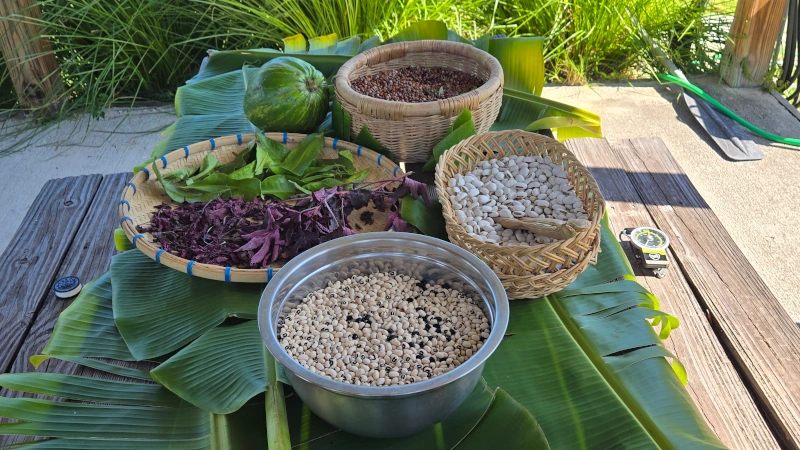Donna Sanders is the script supervisor, field producer and food editor for Where The Food Comes From.
This is her Behind-The-Scenes look at our day filming at Heart of Palms Ranch in Fort Myers, Florida.
A meeting of the minds. When I think about that phrase, I imagine a whole bunch of people brainstorming and sharing ideas. You know, kind of like the United Nations.
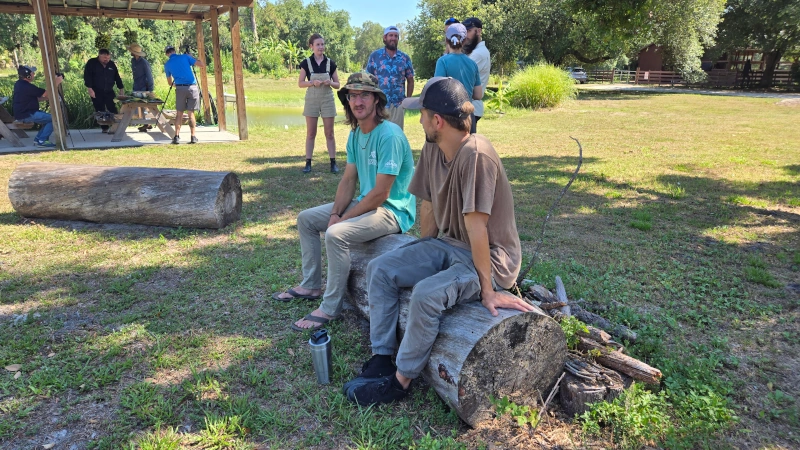
Where The Food Comes From visited Heart of Palms Ranch in Fort Myers, FL on one extremely hot and humid day in late May and met up with some beautiful minds from all over the world. Farming, organic farming, and regenerative farming were all discussed. But a new type of regenerative farming, at least new to me, was introduced – agroforestry.
Worldagroforestry.org defines agroforestry as “agriculture with trees.” Pretty simple right? Wrong. Agroforestry uses trees as part of the agricultural foundation for crops. I know that is clear as mud. Let’s meet these beautiful minds and see if they can shed some light on this subject.
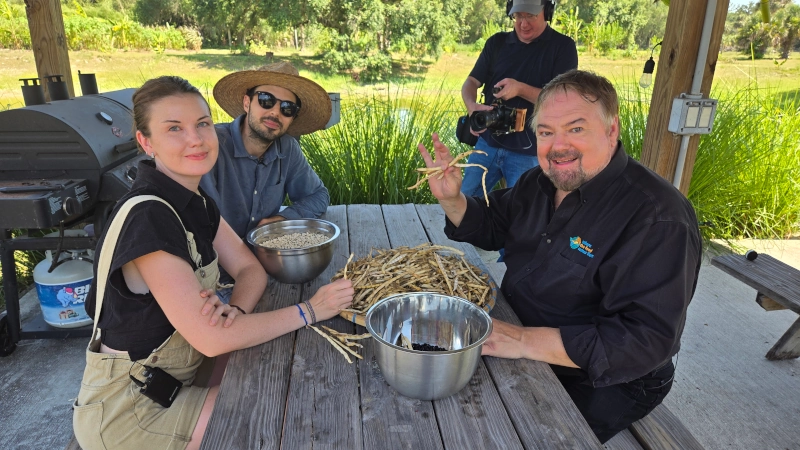
Hannah Morris, Mike Cavaletti, and Chip Carter
Being from the South, shelling peas and beans is not an unfamiliar concept to Host and Producer of Where The Food Comes From Chip Carter. And it was during this relaxing and seemingly mindless task he chatted with Hannah Morris and agroforestry expert Mike Cavaletti.
Mike hails from Brazil and when he was 18 hiked all around Europe to experience other cultures. At the age of 22 he came to Florida to visit his dad and fell in love with Florida and coconuts.
Mike’s passion is growing food in traditional ways and he works as a consultant for people who want to start community gardens and farms. One of his specialties is growing crops without irrigation. I know that does not sound possible, but it is and you will hear all about it in the interview — ah, the agroforestry thing.
Hannah is a petite little thing and native Floridian. Oddly enough, her career is in interior design. But after she met Mike, she wanted to understand farming. What she did truly surprised me and I give her so much credit – I don’t think I could have done it. After Covid, she quit her job and together her and Mike converted a van into a place to live. Mike and Hannah travel from farm to farm to help others get established in regenerative farming and agroforestry. Hannah said, “It’s a full immersion. You cannot really understand the landscape if you come and go. We wake up and go to sleep in it and that’s the best way to understand these regenerative systems.” Got to admit the girl has guts.
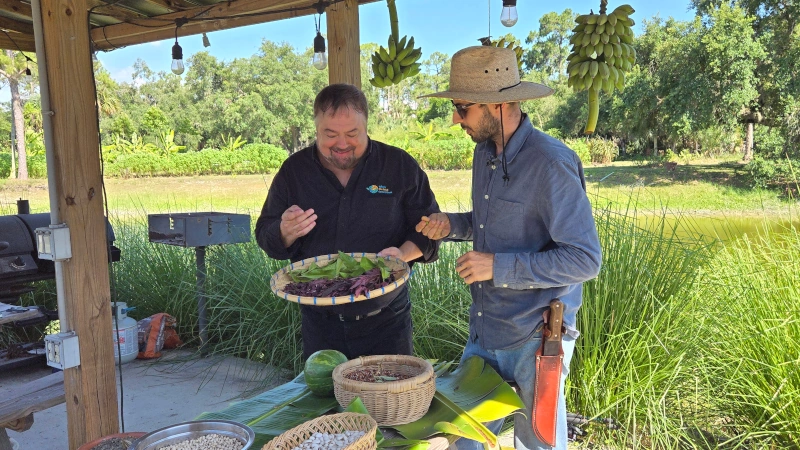
Chip Carter and Mike Cavaletti
Chip continued his conversation with Mike and got a lesson on various peas and beans. But we also learned a bit more about this no-irrigation concept.
Do me a favor: Close your eyes and imagine walking in a forest. When you look around the forest you see things are actually growing in layers. You will have a tall tree then a medium-sized bush and finally plants that grow on the ground. It is Mother Nature’s layering system. This is how she capitalizes on the moisture she provides. The water source comes from the humidity, dew on the ground, and rain. A bit on the mind-blowing side if you ask me. But if you are able to visualize a forest you kind of have an idea of what this concept of agroforestry is all about: And nobody waters the forest.
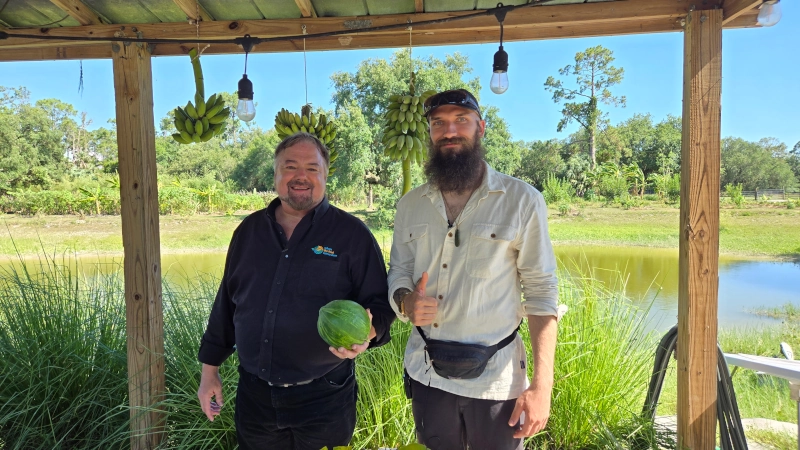
Chip Carter and Byron Birss
Up next our representative from New Zealand, Food Forest Designer & Educator Byron Birss. What is Byron doing in South Florida? Turns out the growing climate in New Zealand is very similar to the tropical climate of South Florida and Byron is on a quest for information and ideas to take back home.
And the definition continues to unfold: Agroforestry is a system of plants growing together instead of the more traditional one crop–one field. Chip and Byron do a great job of explaining it in the episode.
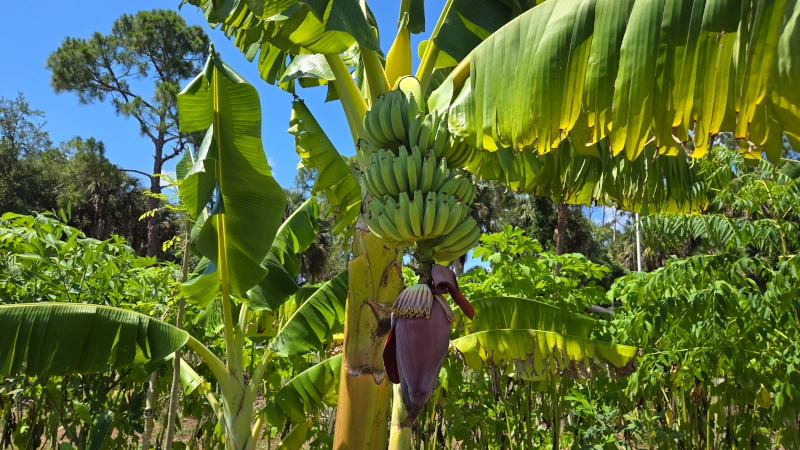
The above picture may be one of my favorites from this episode and Byron explains it beautifully. What you are looking at is the banana flower bell – often called the banana blossom – which actually forms the last bunch of unripe bananas. And get this – it is totally edible. But be warned it does have a bitter taste. Sorry folks, I do not have a recipe for you (but I bet Google does).
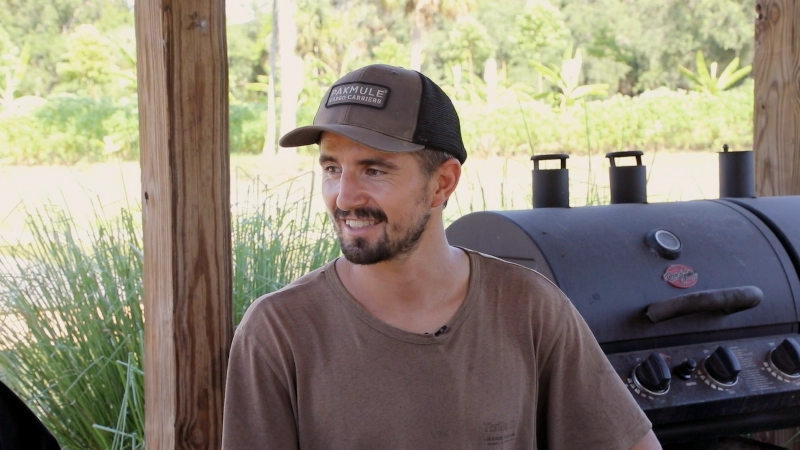
Greg Gyselinck
Our parade of countries continues: Up next is Greg Gyselinck – whose given name is Gregoire – from France. Greg was not initially a farmer; he is actually a filmmaker who has traveled around the U.S. shooting documentaries. And it was through his documentaries that he found his interest in the soil, people’s health, and the food industry. As he made more documentaries about farming his question became, “What can you do on your level?” Greg now owns property in Gainesville, FL and is in the process of trying out the techniques that he has been learning. As Greg put it, “It’s all right there. You just have to look.”
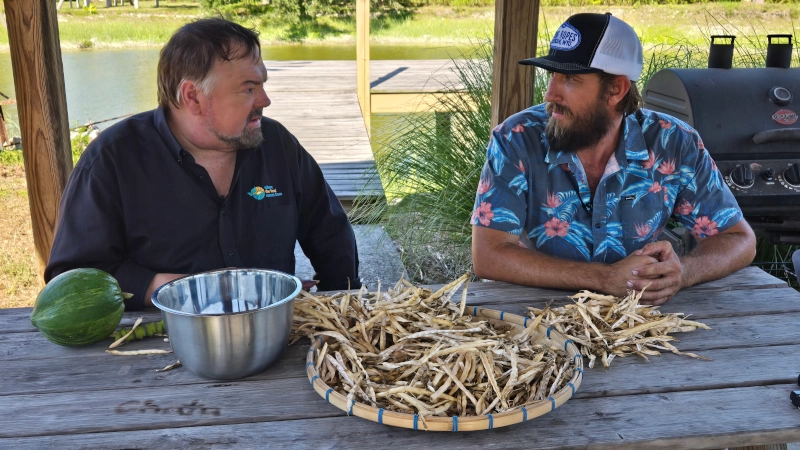
Chip Carter and John Esker
Ready for a curve ball? Up next is an honest to goodness cowboy, John Esker, who hails from Palm City, FL. John is the rugged outdoors type who was in 4-H and FFA when he was in high school. Hmm, what could a cowboy possibly be doing hanging out with a group of farmers? Actually, the answer is pretty cool. He plans on incorporating the concepts of agroforestry on his cattle farm. Sounds like a future episode to me.
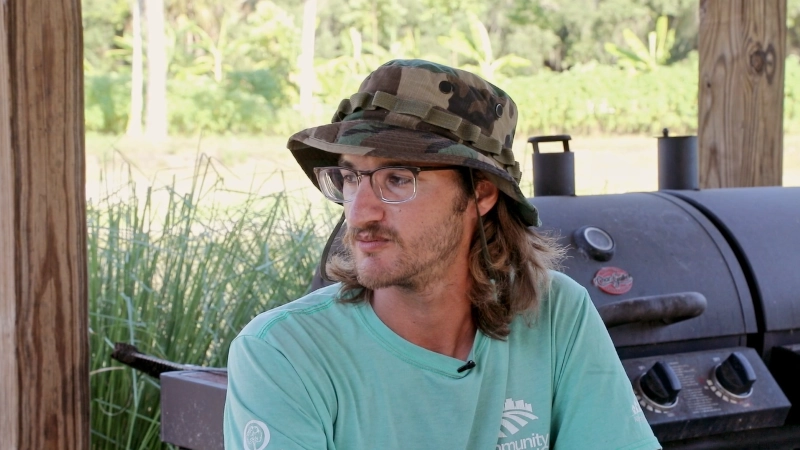
Joshua Anderson
Let’s meet agroforestry consultant & designer Joshua Anderson. He has worked as a consultant on some pretty big projects and is waiting for a work visa for an island in Spain that he has partnered with. Josh’s message is simple: “I really want people to take control of their own lives and be involved in food production.” Josh isn’t implying that everyone should go out and start huge commercial farms. He believes any size project is a win. I couldn’t agree more.
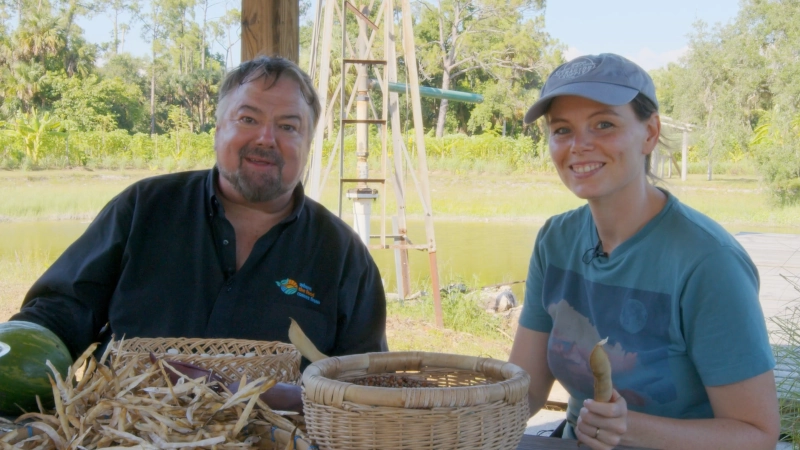
Chip Carter and Shelley Katz
Remember, sometimes the Behind-The-Scenes is not in the same order of the show. Let’s meet the owner/operator of Heart of Palms Ranch Shelley Katz, who’s actually first up in the show and is the reason we are all here.
Shelley’s background is vegetable farming, road crops, tillage and farming with irrigation. When she bought her property in Fort Myers, she did not want to remove the beautiful, ancient oak trees to start a traditional farm. Her mission was to find another way. The solution was to plant crops among the existing trees. Like we have heard in the earlier interviews, work with the land and what exists.
Shelley is new to farming without irrigation and is on her own learning quest. But with the help and support of those beautiful minds you have met she is one step closer to making her farm an agroforestry success. And I cannot wait to see how it turns out.

